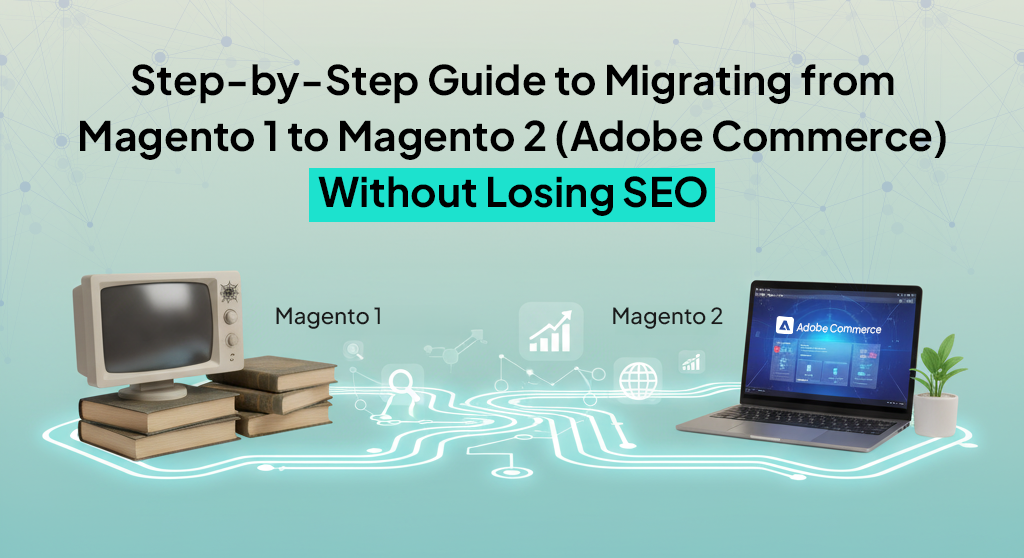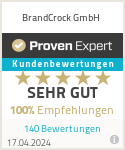Every online store starts with an idea, but the platform you choose decides how far that idea can go. Whether you’re a startup taking its first digital step or a business ready to scale across borders, the foundation matters.
That’s where the debate between Magento vs WooCommerce begins. Both platforms promise the same goal, a reliable, customizable eCommerce experience, but they take very different routes to get there. Magento gives you depth, power, and enterprise-level control. WooCommerce keeps things lean, flexible, and familiar for anyone used to WordPress.
The right choice doesn’t depend on popularity, rather, what stage your business is in and how much control you want over your online store. Let’s break down how these two platforms stack up in 2025, beyond the buzzwords, and from a business owner’s point of view.
Was ist Magento?
Magento is an open-source eCommerce platform created with businesses that aim to grow big. It’s built for flexibility, scalability, and power, qualities that make it a favorite among mid-sized and enterprise-level brands.
The platform allows store owners to create custom shopping experiences, manage multiple stores from one dashboard, and handle large product catalogs with ease. Magento 2, its upgraded version, comes with improved performance, better caching, and a smoother checkout experience.
It’s a platform that gives you near-complete control, but that freedom comes with complexity. You’ll need technical support or a development partner to make the most of it. In short, Magento is ideal for those who see their store as a long-term investment rather than a simple online setup.
Was ist WooCommerce?
If Magento feels like a powerhouse, WooCommerce is the friendly neighborhood store that’s easy to walk into. It’s an open-source WordPress plugin that turns any WordPress site into a fully functional eCommerce shop.
WooCommerce’s biggest advantage is its simplicity. It’s perfect for beginners, small businesses, or anyone already familiar with WordPress. You can start selling products in a matter of hours, customize your design with themes, and manage everything from your WordPress dashboard.
The platform is free to install, easy to expand with plugins, and supported by a massive global community. WooCommerce may not have the deep complexity of Magento, but it’s approachable, flexible, and ideal for businesses that prioritize ease over extensive technical control.
Top 8 Countries Using Magento and WooCommerce
Both platforms have global footprints, but their user bases look a little different. Magento is more common among large-scale enterprises, while WooCommerce dominates small to mid-sized businesses across the world.
Magento has a strong presence in countries like the United States, the United Kingdom, Germany, the Netherlands, and Australia, where enterprise-level eCommerce is thriving. WooCommerce, meanwhile, leads in the United States, India, the UK, Brazil, and Germany, reflecting its popularity among startups, bloggers, and small retailers.
This split shows how both platforms cater to entirely different segments of the same global market.
Magento vs WooCommerce: A Detailed Comparison

The real question isn’t which platform is better, it’s which one fits your business. Let’s explore how they compare across the key factors that matter most to store owners.
Pricing: Magento vs WooCommerce – Which Offers Better Value?
At first glance, both Magento and WooCommerce are free to download and use. The difference lies in what it costs to keep them running smoothly.
WooCommerce’s core plugin is free, but expenses appear as you start scaling — premium themes, extensions, hosting, and maintenance. Still, for small businesses, it remains one of the most affordable ways to start an online store.
Magento Open Source is also free, but it’s resource-heavy and demands powerful hosting. Then there’s Adobe Commerce, the paid enterprise version, which offers enhanced features, cloud hosting, and dedicated support. It’s a serious investment but one designed for serious growth.
If you’re starting small, WooCommerce is the more cost-effective choice. But for large operations that demand high performance and control, Magento provides greater long-term value.
Magento vs WooCommerce: Who Should Use What?
WooCommerce fits anyone who wants simplicity without sacrificing flexibility. It’s ideal for startups, local shops, and entrepreneurs who don’t want to depend on developers for everyday management.
Magento, on the other hand, suits businesses that want to scale fast and need advanced tools for product management, international sales, or B2B operations. It’s made for teams that can handle technical upkeep or partner with a development agency to manage it.
Simply put, WooCommerce is great for getting started quickly, while Magento is built for those thinking years ahead.
Features Comparison: Magento vs WooCommerce
Both platforms deliver solid eCommerce foundations but differ in how much they offer out of the box.
Magento comes equipped with advanced product management, multiple storefront support, layered navigation, and detailed customer segmentation. It’s designed for professional-grade selling.
WooCommerce starts simpler. You get basic store functions, and from there, you can expand by adding plugins for marketing, shipping, inventory management, or analytics. The customization possibilities are endless, but they depend on third-party extensions.
In essence, WooCommerce lets you build what you need, while Magento already provides much of it built-in.
Ease of Use: Which Platform Is More User-Friendly?
This is where WooCommerce shines. If you can manage a WordPress blog, you can manage a WooCommerce store. Its interface is intuitive, and setup takes minutes.
Magento, by contrast, demands more effort. The dashboard is packed with options and tools meant for developers and store managers who understand technical workflows. While it’s incredibly powerful, it’s not something a beginner can master overnight.
So if you’re looking for simplicity, WooCommerce is clearly the more user-friendly option. If you value control and advanced configuration, Magento takes the lead.
Customization & Flexibility: Which Platform Is More Adaptable?
Both Magento and WooCommerce are open-source, meaning you can customize them to your heart’s content. But the level of flexibility differs.
Magento offers deep customization options, from checkout workflows to backend automation and third-party integrations. Developers can shape it into anything you imagine, making it the ultimate playground for tailored eCommerce experiences.
WooCommerce customization is more accessible. With thousands of WordPress plugins and themes, it allows anyone to personalize their store without coding knowledge. However, it can’t match the depth of control Magento offers.
In short, WooCommerce is flexible for most small to mid-sized businesses, while Magento is practically limitless for those with the right technical resources.
Integrations & Ecosystem: Extending Store Functionality
Magento’s extension marketplace is packed with professional-grade tools covering every need, from shipping to analytics and customer engagement. Its ecosystem is vast but curated, focusing on quality and scalability.
WooCommerce benefits from being part of the WordPress ecosystem, giving you instant access to thousands of plugins. You can easily connect CRM systems, email marketing tools, payment gateways, and automation apps, all within a familiar environment.
If you already rely on WordPress tools, WooCommerce feels seamless. If you’re building a robust commercial setup, Magento’s ecosystem will serve you better.
Performance & Speed: Which Platform Is Faster and More Reliable?
Performance depends largely on your hosting and setup. Magento is built for handling large inventories and high traffic. With the right hosting, it delivers excellent speed and stability even under pressure.
WooCommerce performs well on good WordPress hosting but can slow down with too many plugins or large product databases.
In short, WooCommerce is lightweight and efficient for small stores, but Magento scales better when performance demands rise.
Mobile Optimization: Magento vs WooCommerce
In 2025, mobile optimization isn’t optional, it’s expected.
WooCommerce themes are typically responsive out of the box, meaning they adapt smoothly to smartphones and tablets. Magento goes further, supporting Progressive Web Apps (PWA) and allowing brands to create app-like mobile shopping experiences.
Both are mobile-ready, but Magento 2 gives businesses more advanced tools to enhance user experience on every screen size.
Security Features: Which Platform Provides Better Protection?
Security is one of Magento’s strongest suits. Adobe regularly releases security patches and updates, ensuring enterprise-grade protection. Magento also supports two-factor authentication, secure admin access, and advanced data encryption.
WooCommerce relies more on third-party plugins for enhanced security. While it’s safe enough for small to medium businesses, maintaining top-level protection requires careful plugin management and reliable hosting.
If data protection and compliance are priorities, Magento has the edge.
Backup & Disaster Recovery: How Secure Are Your Data and Operations?
Magento’s structure makes it easy to manage backups and restore points. Businesses can schedule automatic backups or integrate third-party tools for added safety.
WooCommerce stores depend on the backup services provided by their WordPress hosting. Some providers offer daily backups, while others require plugins. It’s reliable, but less centralized than Magento’s approach.
Both platforms can protect your data well, Magento simply offers more built-in control.
Data Protection & Compliance: Which Platform Is Safer for Personal Data?
When handling personal data, compliance matters. Magento is built to support global privacy standards like GDPR and PCI DSS. WooCommerce can also comply, but most of its compliance features come through extensions.
If your business operates across different countries with strict data laws, Magento provides a more ready-made structure for compliance and reporting.
SEO & Marketing Tools: Which Platform Supports Growth Better?
WooCommerce has a clear advantage for content-driven stores. Being part of WordPress means you can optimize your store pages and blogs easily using plugins like Yoast SEO or Rank Math.
Magento, meanwhile, comes with built-in SEO tools that allow deep control over metadata, URLs, and site structure. For marketing, it offers advanced options for promotions, upsells, and customer segmentation.
If you focus heavily on content marketing, WooCommerce feels natural. If you want built-in marketing control and advanced automation, Magento is stronger.
Reporting & Analytics Capabilities
Magento provides detailed insights into sales, customer behavior, and marketing performance. Its built-in reporting system helps large stores make data-driven decisions with ease.
WooCommerce includes basic analytics, showing order history and product performance. However, it can be extended with Google Analytics or third-party tools for deeper reporting.
For growing businesses, WooCommerce’s data is enough. For enterprises, Magento’s advanced analytics makes a clear difference.
Omnichannel Capabilities: Selling Beyond Your Website
Magento simplifies multichannel selling by connecting easily with platforms like Amazon and eBay. It supports centralized inventory management and order processing across channels.
WooCommerce also enables multichannel sales, though it depends on plugins and integrations for synchronization.
If omnichannel retailing is part of your growth plan, Magento is the more dependable partner.
Hosting Requirements & Maintenance Needs
WooCommerce runs wherever WordPress does. Maintenance is straightforward, and most hosting providers handle updates and backups automatically.
Magento, in contrast, requires powerful hosting and periodic maintenance. You’ll need to keep your server, extensions, and security patches up to date. It’s more work, but it ensures enterprise-level stability and performance.
Total Cost of Ownership: Initial vs Long-Term Cost
WooCommerce is cheaper at the start. Its low entry cost helps small businesses launch quickly. But as you add premium extensions, the cost can rise.
Magento’s upfront investment is higher, especially if you use Adobe Commerce, but over time, its built-in scalability and automation tools can lower long-term expenses.
The choice comes down to your growth expectations. For quick wins, WooCommerce fits better. For sustained, large-scale performance, Magento pays off.
Migration Support: Moving from Other Platforms
Both platforms support store migration, though the process differs. Magento offers advanced migration tools and structured import systems, making it safer for large or complex stores. WooCommerce provides plugins for migration from Shopify or other WordPress-based systems, which work well for smaller stores.
If you’re migrating a large catalog or need data integrity at scale, Magento handles it with more precision.
Popular Brands Using Magento and WooCommerce

Both platforms are trusted by well-known businesses, but they’re used in very different ways.
Brands that use Magento:
Magento is popular with companies that deal with high traffic, complex operations, and multiple sales channels.
You’ll find it behind names like Coca-Cola, Ford, Chanel, Olympus, and HP. These brands need advanced customization, multiple-store management, and a system that can handle large catalogs and international operations, which is exactly what Magento provides.
Brands that use WooCommerce:
WooCommerce is often used by brands that want flexibility without heavy technical demands. It’s popular with agencies, lifestyle and fashion brands, and brands that rely on strong blogging and content.
Some of the names using WooCommerce include Weber, AllBlacks, Singer, RootScience, and Blue Star Coffee. These businesses benefit from the fact that WooCommerce runs on WordPress, it’s easy to manage, easy to scale, and great for content + eCommerce together.
How Can BrandCrock Help You in Magento and WooCommerce?
Our certified eCommerce developers specialize in both platforms, and can help businesses like yours pick one platform that fits their goals, not just their budget.
We build, customize, and optimize online stores that perform, scale, and reflect your brand’s personality. Whether you’re planning to launch your first WooCommerce shop or scale your Magento-based eCommerce business, our team ensures your store runs efficiently and stands out in your market.
Final Thoughts: Magento or WooCommerce – Which One Should You Choose?
There’s no single winner in the Magento vs WooCommerce debate, it all comes down to what your business really needs. WooCommerce gives you a straightforward, cost-friendly way to start selling, especially if you already use WordPress and want something easy to manage. Magento, on the other hand, is built for businesses that think bigger, need more power, and want a platform that won’t crack under scale.
The right choice comes down to which platform fits your goals, your team, and your growth plans. Pick WooCommerce if you value simplicity and flexibility. Go with Magento if you need advanced features and long-term scalability.
At the end of the day, the best platform is the one that makes it easier for you to focus on what matters most: running your business and serving your customers.





